What if just 10 minutes a day could help you stand taller, feel stronger, and live with less pain?
Living with scoliosis often feels overwhelming, but what most people don’t realize is that small, consistent actions can make a big difference. You don’t need an hour-long workout or a complicated routine; a carefully designed 10-minute exercise plan can reshape your posture and relieve discomfort.
Fact: Studies show that targeted scoliosis exercises can improve spinal alignment by up to 32% in mild cases. Now imagine harnessing that power with just 10 minutes of smart movement daily. Ready? Let’s dive into it.
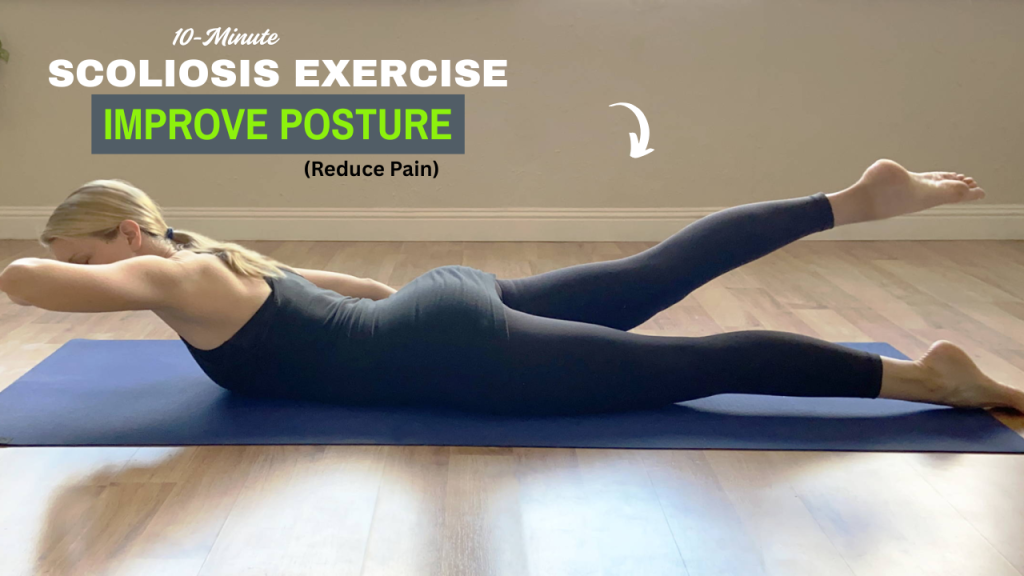
Table of Contents
Understanding Scoliosis and Why Movement Matters
Scoliosis is a sideways curvature of the spine that often develops during growth spurts. It can be structural (where the spine’s shape is truly altered) or functional (caused by muscle imbalance).
Myth Buster: Many believe scoliosis can be fixed by simply standing straight or using a back brace. However, posture correction must come from strengthening, stretching, and retraining muscles — not just external support.
Exercises, when done correctly, can:
- Reduce stiffness
- Improve muscular symmetry
- Boost posture
- Alleviate back, shoulder, and neck pain
- Enhance breathing capacity
And the best part? You don’t need to be a fitness expert to get started!
Scoliosis: Myths vs. Facts
Myth 1: Scoliosis always leads to disability.
Fact: Most cases of scoliosis are mild and manageable with exercise, therapy, and regular monitoring. Many people with scoliosis live active, full lives without major limitations.
Myth 2: Braces alone can fix scoliosis.
Fact: Bracing can help prevent the curve from worsening, especially during growth spurts, but it does not “fix” scoliosis. Strengthening exercises are crucial for long-term posture and spinal health.
Myth 3: Only surgery can correct scoliosis.
Fact: Surgery is typically reserved for severe cases. Most individuals improve posture, function, and pain through non-surgical interventions like physical therapy, scoliosis-specific exercises, and lifestyle adjustments.
Myth 4: If you have scoliosis, you shouldn’t exercise.
Fact: The right exercises can dramatically improve posture, reduce pain, and enhance overall quality of life. Movement is part of the solution, not the problem.
Myth 5: Scoliosis only affects the back.
Fact: Scoliosis can influence the entire body, affecting breathing, digestion, and even energy levels because of how the spinal curve impacts internal organs and muscles.
Do’s and Don’ts for Scoliosis Exercises
| Do’s | Don’ts |
|---|---|
| Consult your doctor or physical therapist before starting. | Start a new exercise routine without medical advice if you have severe scoliosis. |
| Focus on gentle, posture-correcting exercises. | Perform high-impact or aggressive movements that strain the spine. |
| Practice daily for consistent improvements. | Skip exercises for long periods; inconsistency slows progress. |
| Listen to your body — stop if you feel sharp pain. | Push through intense pain thinking it will lead to faster results. |
| Maintain proper breathing during each exercise. | Hold your breath or tense up during movements. |
| Use supportive tools like a yoga mat or cushion if needed. | Ignore discomfort from hard surfaces, risking additional strain. |
| Stay patient and celebrate small improvements. | Expect overnight changes — scoliosis management is a journey. |
| Include core-strengthening exercises to support your spine. | Focus only on stretching without strengthening the muscles. |
The 10-Minute Scoliosis Exercise Routine
Disclaimer: Always consult a healthcare professional before beginning a new exercise program, especially with scoliosis.
Each exercise below is carefully chosen to activate core muscles, stretch tight areas, and encourage spinal balance. Set a timer for 10 minutes and flow through these movements daily.
1. Cat-Cow Stretch (1 minute)
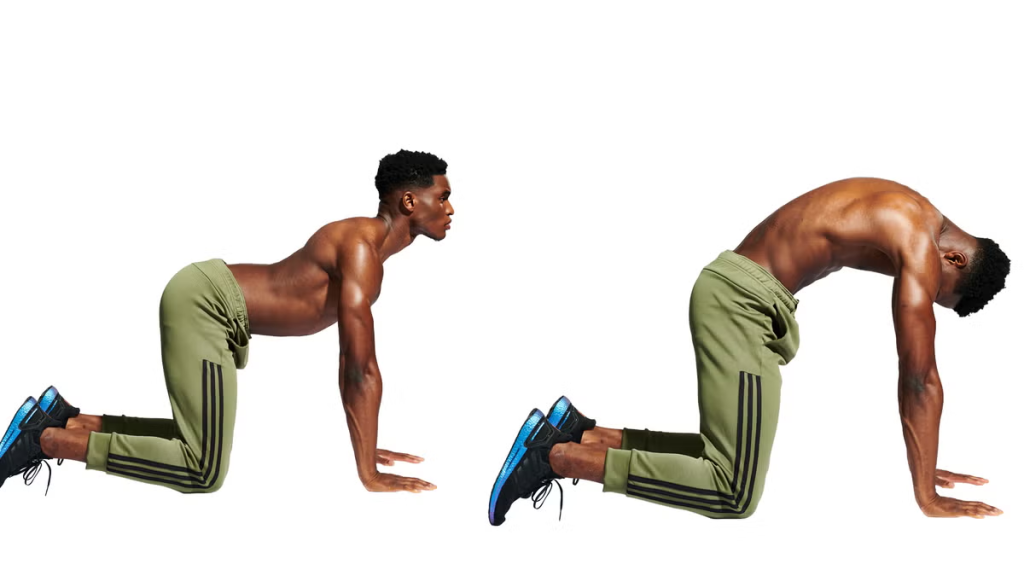
Why: Improves spinal mobility and warms up the back muscles.
- Start in a tabletop position (hands under shoulders, knees under hips).
- Inhale: Drop the belly, lift your head and tailbone (Cow Pose).
- Exhale: Arch your spine towards the ceiling and tuck your chin (Cat Pose).
- Flow with your breath slowly.
Fun Fact: Regular spinal mobility exercises can delay the progression of mild scoliosis!
2. Child’s Pose with Side Stretch (1 minute)
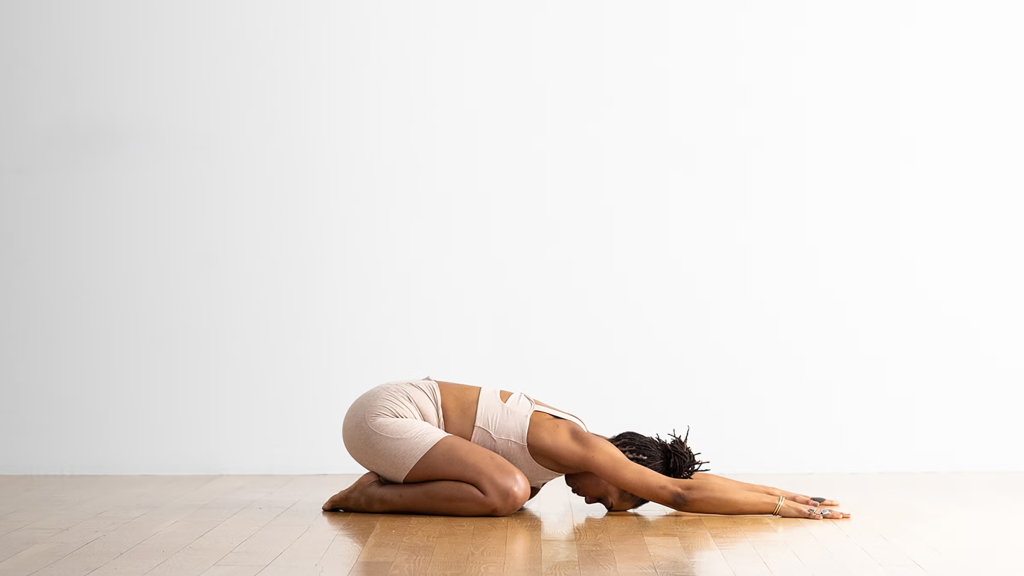
Why: Releases tension in the lower back and elongates side muscles.
- Sit back onto your heels, reaching your arms forward.
- Walk both hands slightly to the right, feeling a deep stretch on the left side.
- Hold for 30 seconds, then switch sides.
Tip: Focus on breathing into the ribs — it helps expand and stretch the muscles around the curvature.
3. Wall Angels (2 minutes)

Why: Strengthens the postural muscles, especially the upper back.
- Stand with your back flat against a wall, feet a few inches away.
- Press your lower back, mid-back, and head into the wall.
- Raise your arms up to make a “W” shape, then slowly stretch them up into a “Y.”
- Keep contact with the wall as much as possible.
Do You Know? Strengthening your mid-back can significantly reduce the “hunch” often seen in scoliosis patients.
4. Pelvic Tilts (1 minute)

Why: Activates deep core muscles and stabilizes the lower spine.
- Lie on your back with your knees bent and feet flat on the floor.
- Gently tilt your pelvis backward, flattening your lower back against the ground.
- Hold for a few seconds, then release.
Pro Tip: This subtle movement trains your body to find neutral spine alignment naturally.
5. Side Plank (Modified) (2 minutes — 1 minute per side)
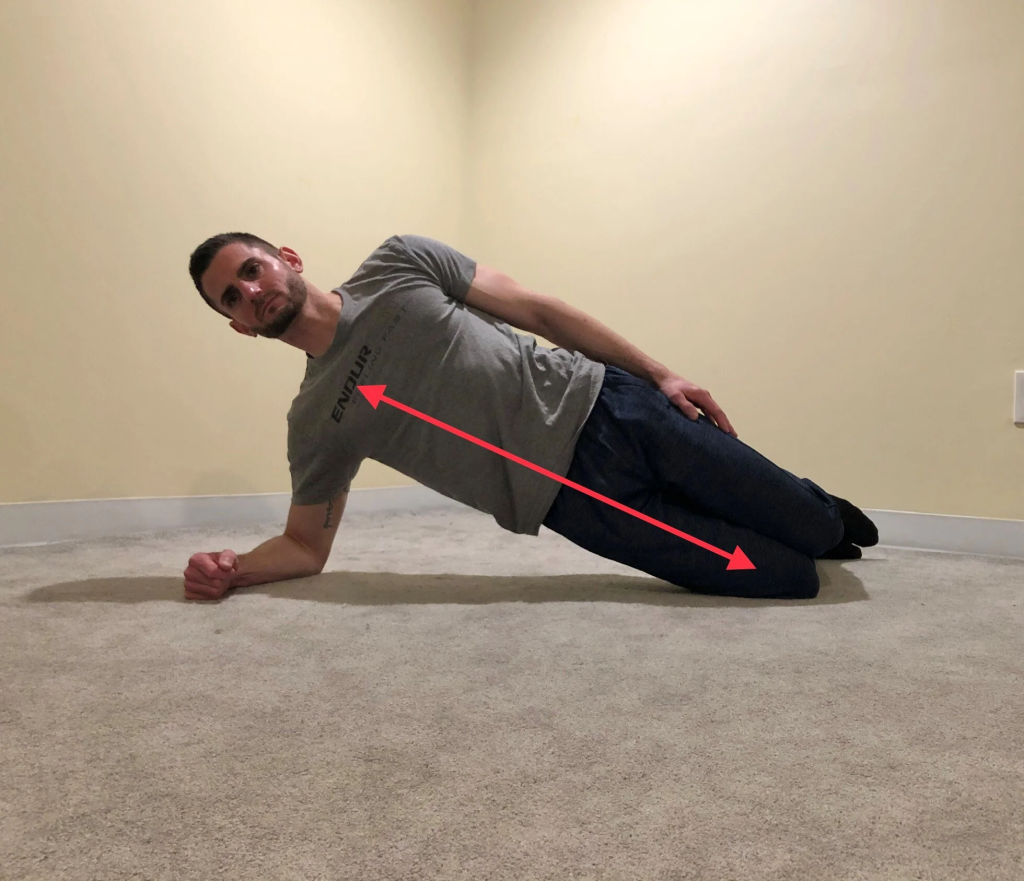
Why: Builds core strength, especially in the muscles that support spinal alignment.
- Lie on your side with your knees bent.
- Prop yourself up on your forearm.
- Lift your hips off the ground, forming a straight line from shoulders to knees.
- Hold for as long as possible on each side.
Variation: Straight-leg side plank if you want more challenge!
6. Thread the Needle Stretch (1 minute)
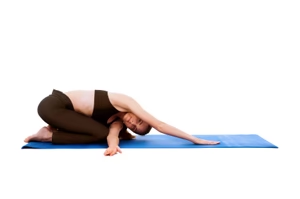
Why: Relieves upper back tightness, particularly around the shoulders.
- Start in a tabletop position.
- Slide your right arm underneath your left arm, resting your shoulder and ear on the ground.
- Hold for 30 seconds, then switch sides.
Interesting: Loosening the upper back allows the spine to realign more naturally during everyday activities.
7. Sphinx Pose (2 minutes)

Why: Strengthens the lower back muscles without overextending the spine.
- Lie on your belly.
- Prop yourself up on your forearms, elbows directly under your shoulders.
- Keep your pelvis grounded and gently lift your chest.
Important: Focus on gentle engagement rather than forcing a big backbend.
Bonus Tip: Mind Your Breath
Breathing deeply and evenly during exercises isn’t just relaxing; it’s therapeutic for scoliosis. Expanding the lungs, especially on the compressed side, can create subtle improvements in ribcage and spinal flexibility.
Common Mistakes to Avoid
- Forcing stretches: It’s not about maximum stretch; it’s about control and alignment.
- Ignoring weaker sides: Spend a little extra time strengthening the weaker side of your body.
- Skipping consistency: 10 minutes daily beats 60 minutes once a week.
Conclusion: Your 10-Minute Investment for a Stronger Spine
Scoliosis might shape your spine, but it doesn’t have to define your life.
With just 10 minutes a day, you can significantly improve your posture, reduce pain, and regain confidence in how you move.
Imagine one month from now — feeling taller, stronger, and more in control of your body.
The first step? Roll out your mat and start today. Your future self will thank you.
Frequently Asked Questions (FAQs)
Can a 10-minute exercise routine really help with scoliosis?
Yes, it absolutely can. While 10 minutes won’t “cure” scoliosis, consistent daily exercise can significantly improve posture, strengthen supportive muscles, reduce pain, and even slow the progression in mild to moderate cases. The key is consistency and proper technique.
Is it safe to exercise with scoliosis?
In most cases, yes — especially with gentle, targeted exercises like the ones shared above. However, it’s crucial to consult with a doctor or physical therapist first, especially if you have severe scoliosis or other spinal conditions.
How soon can I expect to see improvements?
Many people report feeling better posture, reduced stiffness, and less pain within a few weeks of regular practice. However, visible changes in spine alignment take longer and depend on individual factors like age, severity of the curve, and overall fitness.
Can I do these exercises even if I wear a scoliosis brace?
Yes, but it’s best to remove the brace during exercise to allow free and full movement. Always follow your orthopedic specialist’s guidelines regarding brace wear and exercise.
What if I feel pain during an exercise?
Stop immediately if you feel sharp or worsening pain. Mild muscle fatigue is normal, but true pain is not. Always listen to your body, and if needed, modify or skip movements that cause discomfort.






Very good
Very good
Very good
Awesome
Good
Awesome
Awesome
Very good
Awesome
Very good